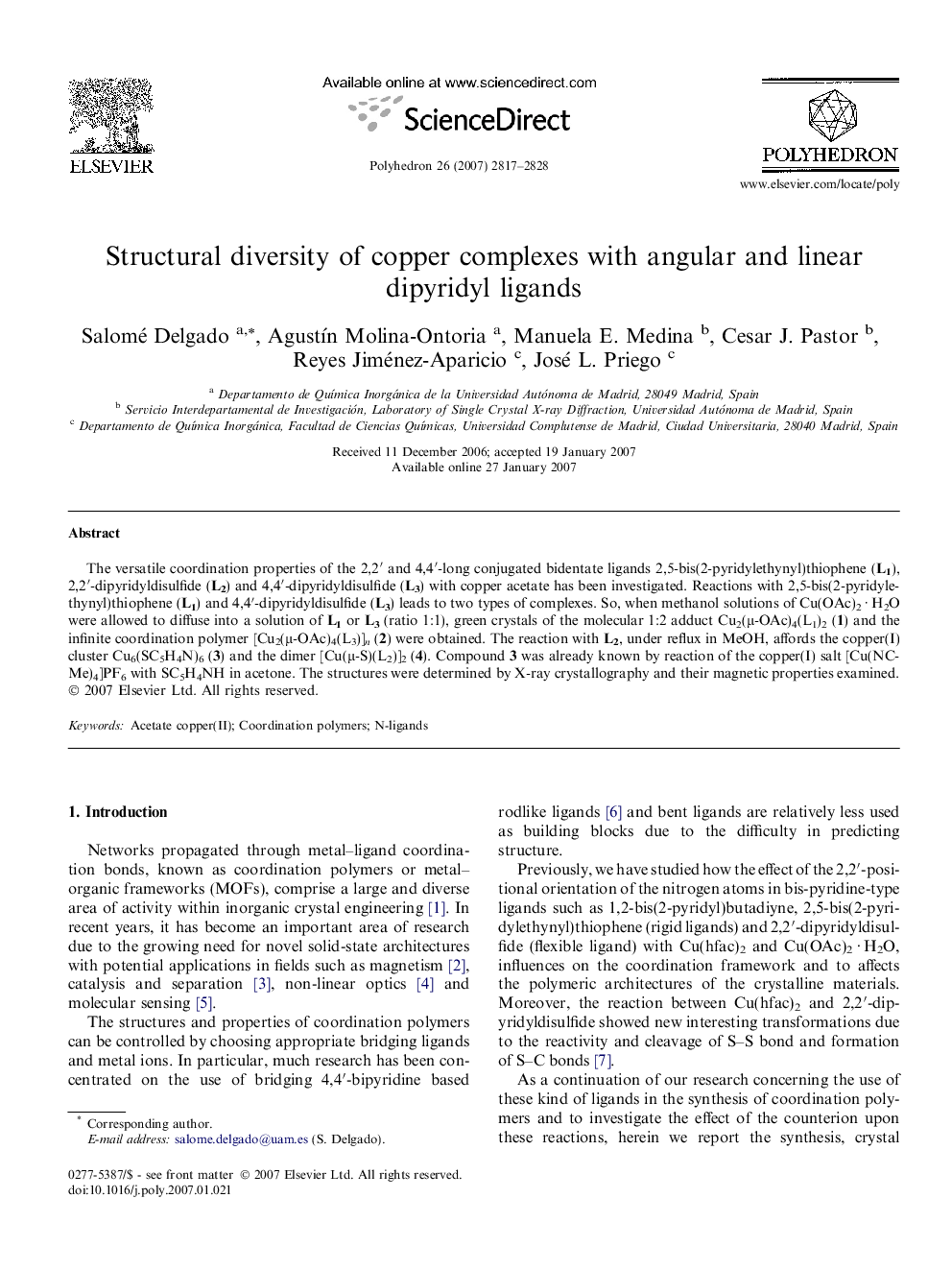| Article ID | Journal | Published Year | Pages | File Type |
|---|---|---|---|---|
| 1339842 | Polyhedron | 2007 | 12 Pages |
The versatile coordination properties of the 2,2′ and 4,4′-long conjugated bidentate ligands 2,5-bis(2-pyridylethynyl)thiophene (L1), 2,2′-dipyridyldisulfide (L2) and 4,4′-dipyridyldisulfide (L3) with copper acetate has been investigated. Reactions with 2,5-bis(2-pyridylethynyl)thiophene (L1) and 4,4′-dipyridyldisulfide (L3) leads to two types of complexes. So, when methanol solutions of Cu(OAc)2 · H2O were allowed to diffuse into a solution of L1 or L3 (ratio 1:1), green crystals of the molecular 1:2 adduct Cu2(μ-OAc)4(L1)2 (1) and the infinite coordination polymer [Cu2(μ-OAc)4(L3)]n (2) were obtained. The reaction with L2, under reflux in MeOH, affords the copper(I) cluster Cu6(SC5H4N)6 (3) and the dimer [Cu(μ-S)(L2)]2 (4). Compound 3 was already known by reaction of the copper(I) salt [Cu(NCMe)4]PF6 with SC5H4NH in acetone. The structures were determined by X-ray crystallography and their magnetic properties examined.
Graphical abstractNew compounds generated from the reactions of 2,5-bis(2-pyridylethynyl) thiophene (L1), 2,2′-dipyridyldisulfide (L2) and 4,4′-dipyridyldisulfide (L3) with copper acetate have been synthesized, structurally characterized by X-ray diffraction and your magnetic properties studied. The observed structures in these compounds based on dipyridyl ligands in 2,2′ and 4,4′-positions, illustrate as the positional orientation of pyridyl nitrogen atoms affect to structure during the self-assembly process.Figure optionsDownload full-size imageDownload as PowerPoint slide
